This is a comprehensive guide to Italian ingredients, from seasoning to spices, herbs to cheese, and the best Italian brands to buy. This is all you need in your pantry and fridge to cook most classic Italian recipes. All the main Italian ingredients and their main use in the traditional recipes. A printable shopping list at the end.
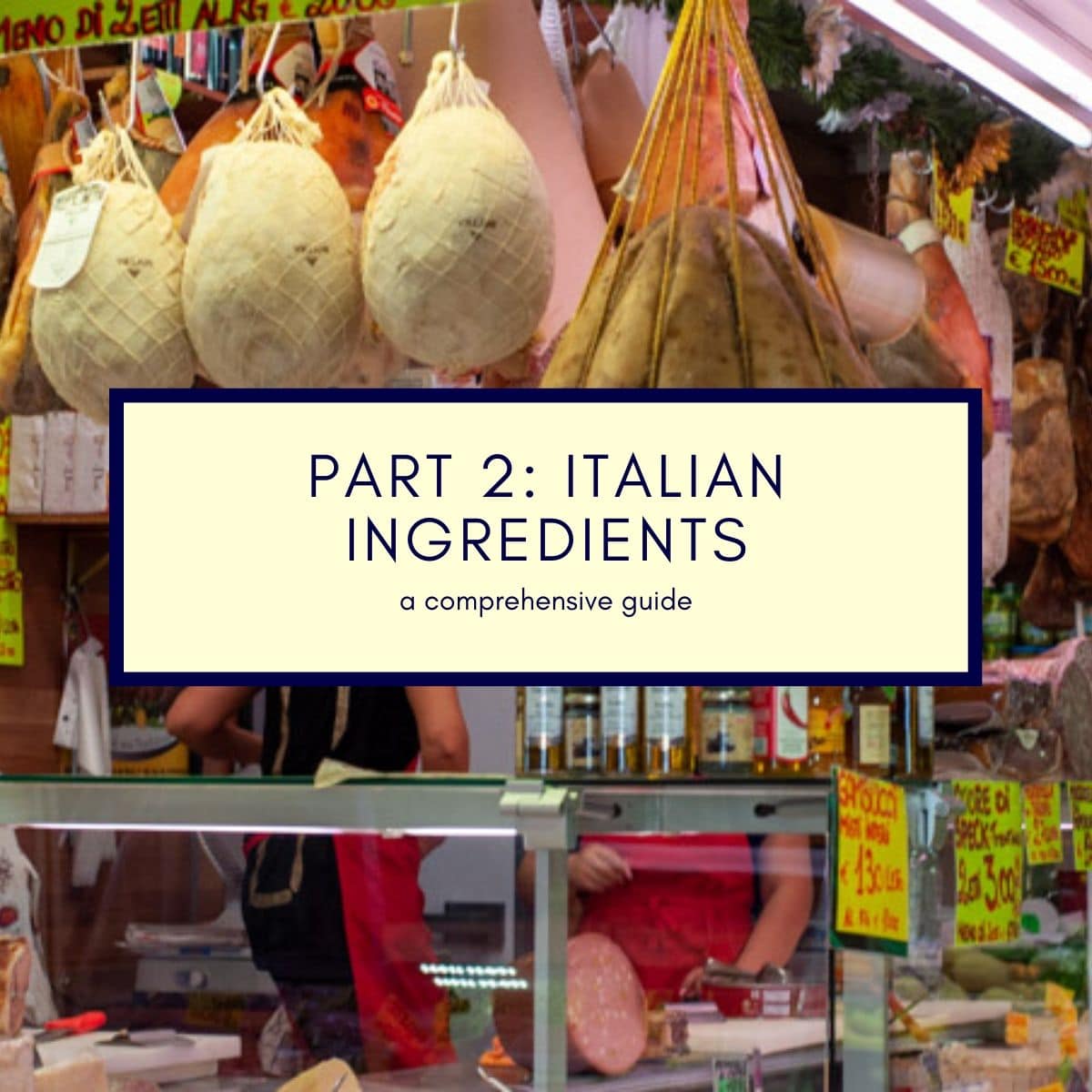
This post is part 2 of the 4 article series: Organize your kitchen and eat healthily.
Jump to:
- Ingredients in the Italian cuisine
- Essential ingredients for seasoning
- Staples of Italian cuisine
- Preserves for condiments and pasta sauces:
- Food Preserves:
- Nuts and dried fruits
- Fresh Sauces:
- Fresh herbs:
- Cheese
- Salumi e Insaccati
- Ingredients for Desserts
- Drinks
- Main Ingredients
- More authentic Italian resources
- 📋 Clipboard (ingredients)
Ingredients in the Italian cuisine
Ingredients and their quality are at the center of any Italian recipe, and thanks to the Italian climate and biodiversity, they are mostly sourced locally.
So here is the list of the Italian ingredients you will find in most Italian homes and my recommendation for the best quality brands to buy.
You can find the list to print at the end of the article.
For more information about local regional ingredients and their link to Italian cuisine, you can read the article: Traditional Italian food by Region
These are fundamental ingredients for an Italian pantry.
For fresh herbs and spices, you can read the article: 36 Essential Herbs And Spices Used In Italian Cooking
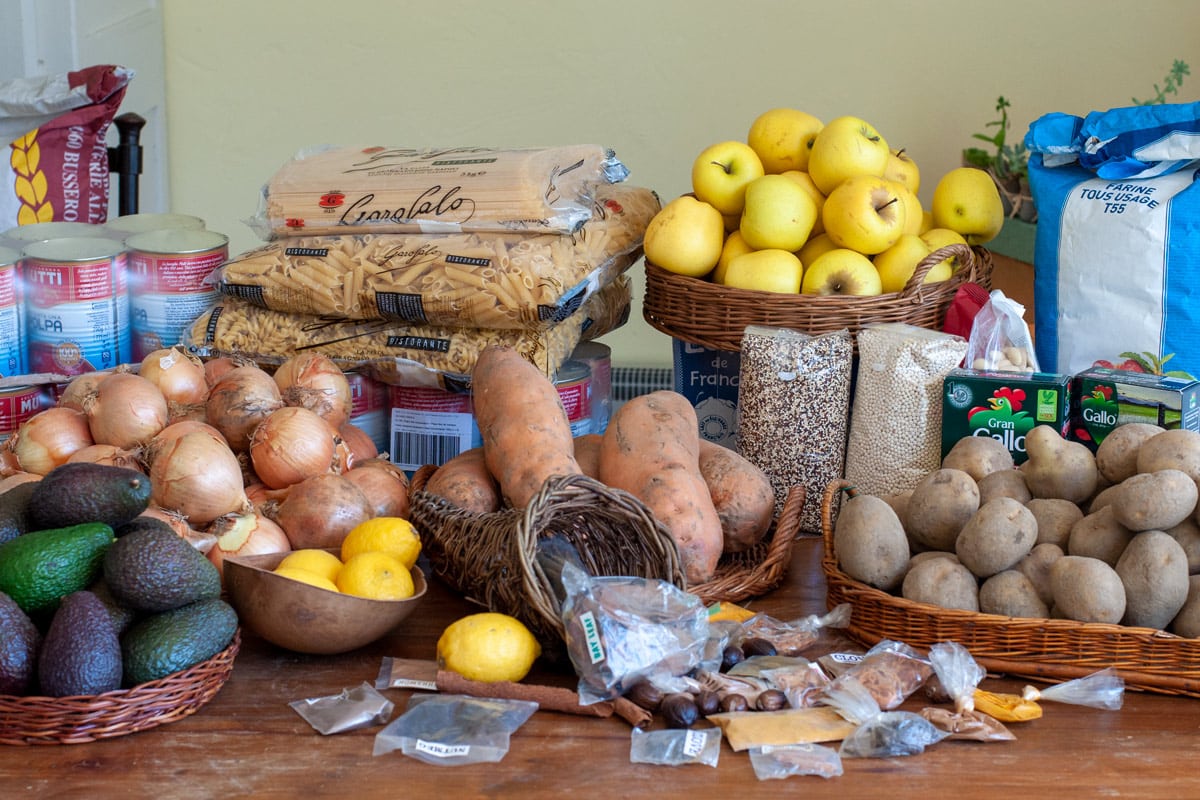
Essential ingredients for seasoning
Pantry staples:
- Extra virgin olive oil is made with only the first press of the olives. It has to have specific characteristics and is mainly used raw for seasoning. You can read more about different types of olive oils in the article: Italian Bruschetta. I usually buy my extra virgin olive oil from a friend who produces it around 5 gallons - 20 liters per year; sometimes, I receive it as a present. I recommend buying your extra virgin olive oil from a respectable producer in your country.
- Salt: no need for much explanation
- Coarse salt: usually used in boiling water to cook pasta or vegetables
- Black pepper: freshly grated in most dishes
- White pepper: more delicate than the black and less spicy
- Cube stock (chicken, vegetable, beef): often used instead of salt to flavor stews or minestrone
- Saffron: used in light fish stews, pasta, or rice sauces. The most famous is the classic risotto alla Milanese served with osso buco (bone marrow)
- Nutmeg: used to flavor white sauce, bechamel, or stews
- Vinegar (red or white) is made by adding vinegar yeast to white or red wine and is used for seasoning. It can also be made with other ingredients like apple cider, honey, beer, and other
- Balsamic vinegar is very different from regular vinegar as it is more complex to make and requires at least 12 to 25 years to mature. The balsamic vinegar you buy at the supermarket is probably not real balsamic vinegar. The low price cannot justify the real procedure of Balsamic vinegar. Check the labels, and make sure it is Made in Modena and it is a DOC. You can use supermarket Balsamic vinegar for cooking; that is fine. But if you want to use it for seasoning, you should try the real one. I buy mine at the Acetaia San Giacomo and you can find it on Amazon.
Italian rule: never use Balsamic vinegar on Caprese salad. Those two ingredients do not mix; Caprese is from the South of Italy, the Isle of Capri. Balsamic vinegar is from Modena, North of Italy.
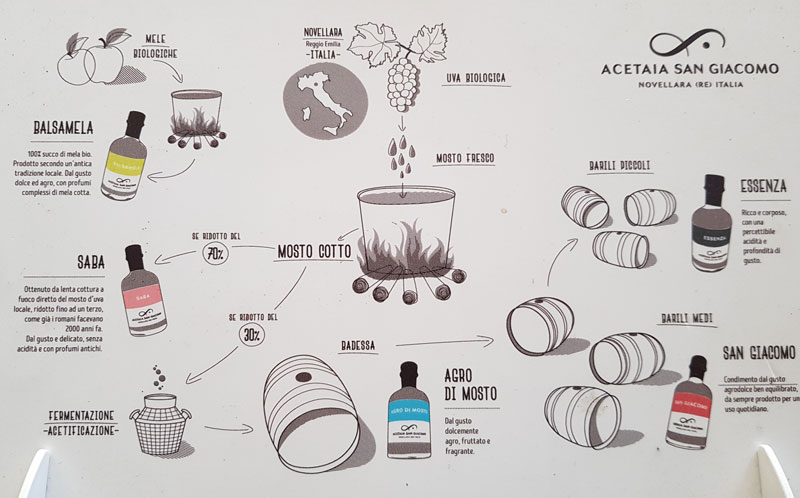
Essential ingredients for cooking
- Olive oil: is different from extra virgin olive oil as it is made by pressing the olives several times and adding vegetable oil to adjust acidity. Mostly used for cooking. You can read more about different types of olive oils in the article: Italian bruschetta
- Other vegetable oils: a lighter olive used for frying. I prefer peanut oil as it can reach a higher temperature without deteriorating into complex molecules that can be carcinogenic. Extra virgin olive oil can also reach high temperatures but it will lose its flavor. Since it is an expensive oil, it is not worth using it.
- Butter: used for sauces and cooking more in the North of Italy than in the South, depending on the recipes if it is of French origin. Generally speaking, butter in Italy is not as good as in France and England. Some people claim that the milk in Italy is used to make Parmigiano Reggiano
- Lard: not as easy to find these days; it can be substituted with butter or duck fat.
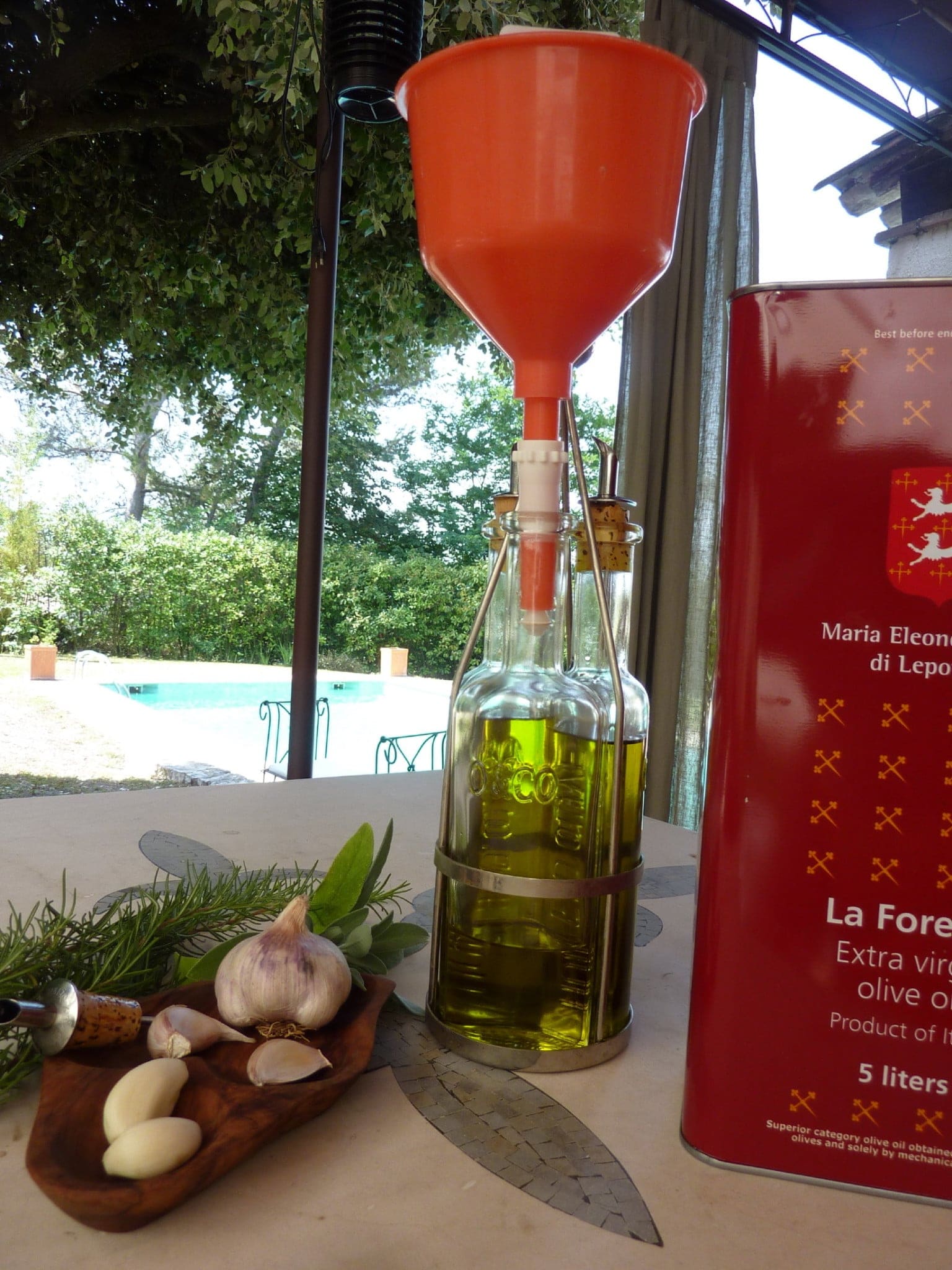
Staples of Italian cuisine
- Carnaroli Rice or Arborio Rice: best rice for risotto is Carnaroli, second-best Arborio. The rice is also used for Timbale or Arancini, fried risotto rice filled with meat or cheese. You can find all my recipes with rice in the category: Rice. I buy Riso Gallo, but it is not available in the USA.
- Pasta: can be of different shapes and forms, dry or fresh. Each shape is used with a different sauce based on how well they mix and combine together. My favorite brands are, in order of preference, Rummo, Garofalo, Voilello, De Cecco. You can find all my pasta recipes in the category: Pasta
- Pulse: chickpeas, beans, and lentils are very common in Italian cuisine. They are cooked as a side dish, in soups or with pasta. they are a great alternative to meat. I prefer them dry, but you can also buy them in cans.
- Flours: typically, the flour sold in Italy is type 00, equivalent to pastry flour, and in France type 45. The flour best for pizza is type 0, the equivalent of all-purpose flour. The best for pizza and bread is flour Manitoba which has a high percentage of proteins. You can find all my pizza recipes on the category: pizza
- Semolina flour: it is made from hard wheat, and it is used to make fresh pasta
- Polenta: it is a flour made of cornmeal; it is a type of porridge usually served with a creamy stew or sausages
- Semolino: use to make Gnocchi alla Romana or soup
- Cornstarch: it is a starch derived from corn, and it is used to thicken sauces and gravy. It is lighter than flour; however, flour can be used as a substitute
- Stale bread: Italians never throw away stale bread as it is used to make breadcrumbs, a very common ingredient in many Italian recipes.
- Grissini: dry crunchy breadsticks that are used as bread or for appetizers
- Wheat for pastiera: it is special wheat used to make pastiera, a classic Easter dessert

Preserves for condiments and pasta sauces:
- Tomato sauce: I don't think there is an Italian household without a stock of tomato sauce. I like to make it myself in September and stock up for the winter. In the Southern countryside, preserving tomato sauce is like a social event; they make it in a barrel. However, if I buy it, buy Mutti.
- Concentrated tomato paste is a tomato sauce that has been boiled until it thickens like a paste. It gives color, enriches the taste, and thickens the sauce. I use it on my black ink pasta.
- Olives: There are many varieties, black, green, large, small, pitted, and not. They are used as appetizers, in different recipes, or the salads. It is handy to always have a jar at home; they are very versatile. You can also buy or make the tapenade, an olive paste that can be served as a spread for an appetizer.
- Dried hot chili: The chili peppers are hung with strings and added to dishes to make them spicy. Chillis are also preserved in a good quality extra virgin olive oil to make a spicy oil for seasoning.
- Anchovies: they are sold in jars stored in oil or salt. I prefer the one stored in salt as you never know what oil is used in commercial jars. They need to be rinsed and deboned before use. They are used for seasoning instead of salt, mixed in a blender like the dressing in Puntarelle alla Romana or melted in a pan with olive oil and garlic like in the pissaladiere. They are also added in salads as filets like in the Nicoise or in the Ceasar salad.
- Capers are flower buds used as herbs to flavor sauces and salads and mixed with vegetables like in the caponata. Like basil, oregano, and parsley, they are standard ingredients in every Italian kitchen. They have a strong flavor and are normally used in small quantities. As the anchovies are stored in salt or olive oil. I always prefer the ones stored in salt as they have more flavor. In the South of Italy, capers plants grow naturally on the rocks or supporting walls of the streets. If you look up the ancient Roman walls in Rome, you will see them.
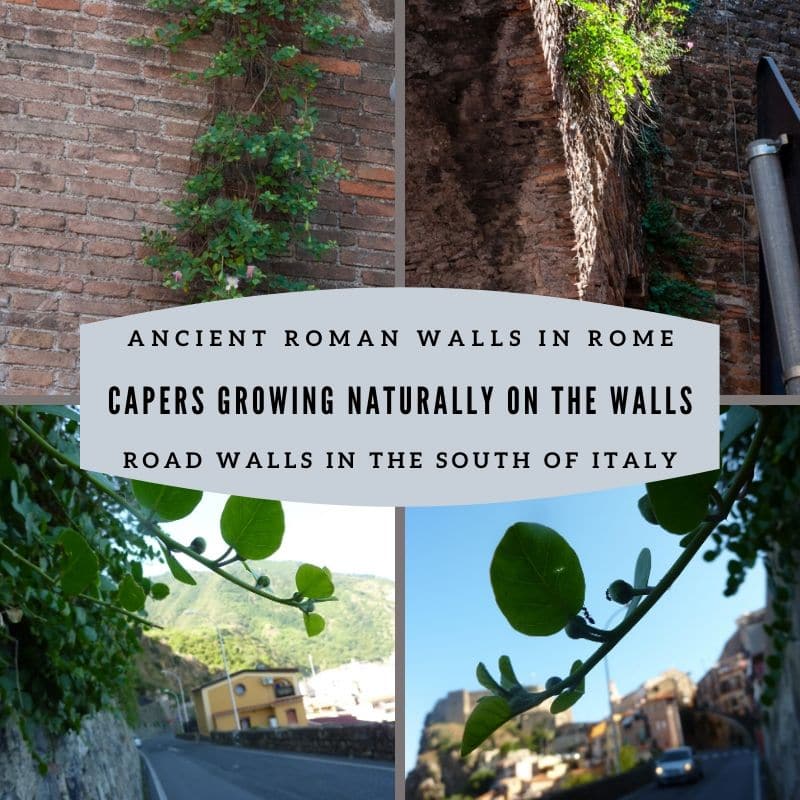
Food Preserves:
- Tuna: every Italian kitchen has several cans of tuna stored in extra-virgin olive oil as a backup when you have nothing in the fridge. You can make a meal in no time: green salad, rice salad or pasta. I always buy tuna stored in a glass jar, as you can see the quality of the filet. A brand I love is Callipo. For unusual ideas, you can find my recipe for Tuna Meat Loaf
- Vegetables preserved in olive oil: there are so many vegetables Italians love to store in jars to preserve them while they are in season: mushrooms, eggplants, artichokes, sundried tomatoes. They are a great resource of vegetables to serve with cheese and ham for light evening meals. No cooking is required, just a large fresh loaf of sourdough bread. Be aware of homemade preserves; they can develop a dangerous life-treating bacteria called Botulinum if not prepared correctly.
- Fresh truffles are wild mushrooms that grow underground; their taste is very special. It is not found in every Italian kitchen as it is expensive and used more as a treat. It is sold and stored in jars, rice, or salt. Personally, I prefer using it fresh (Pasta with fresh truffle) or the one stored in jars as a cream mixed with wild mushrooms (Gnocchi with truffle).
- Jams and marmalades: vegetables and fruit preserves like jams and marmalades are always stocked up in Italian pantries. Besides having bread and jam for breakfast, Italian make wonderful short pastry cakes with jams that last for the week: crostata. You can find my homemade jams made with apricot, peaches, grapes. I also make spicy red pepper jelly and balsamic fig glaze to serve with savory food.

Nuts and dried fruits
- Nuts: Almonds, pistachios, walnuts, and pinenuts are used in Italian cuisine not only for desserts but also for savory dishes: Genovese pesto, Sicilian pesto, and caponata. They are particularly famous for the Sicilian almonds and pistachios are grown in Bronte at the Etna slopes
- Dried fruits are a common way to preserve fruits in Italy, especially in the south, where the sun is very strong during the summer. Most of the fruits in season during the summer are preserved by drying them in the sun. These dried fruits are used in cakes and pastries throughout the year, especially at Christmas
- Dried vegetables: the most common dried vegetables are tomatoes and Porcini mushrooms. They are in season in august, right when the sun is strong, and they can be preserved by drying under the sun. The Porcini mushrooms are then rehydrated by adding boiling water. They are used as condiments for pasta or risotto. The sundried tomatoes are used in many different ways; they can be added to savory pies, preserved in jars covered with oil, or used for pesto.
- Candied fruits: Another way to preserve fruits is by cooking them in sugar. These fruits are cut into small bits and used in many desserts; the most well-known is the Panettone, the Sicilian Cassata. They should also be added to the Easter cake pastiera and to the struffoli, but frankly, I rather not
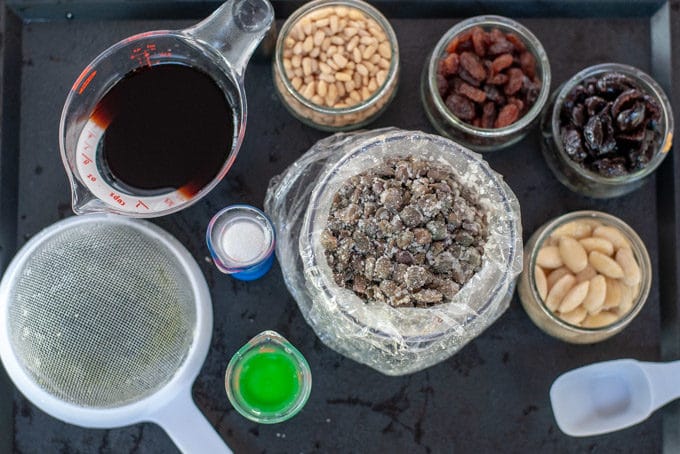
Fresh Sauces:
- Mayonnaise: I usually make it myself at home. If I buy it, I like the french brand Benedicta
- Mustard: I like spicy mustard like the English Colmans' or the French in grains Maille
- Aioli: it is mayonnaise with garlic, I either make it or buy the Benedicta
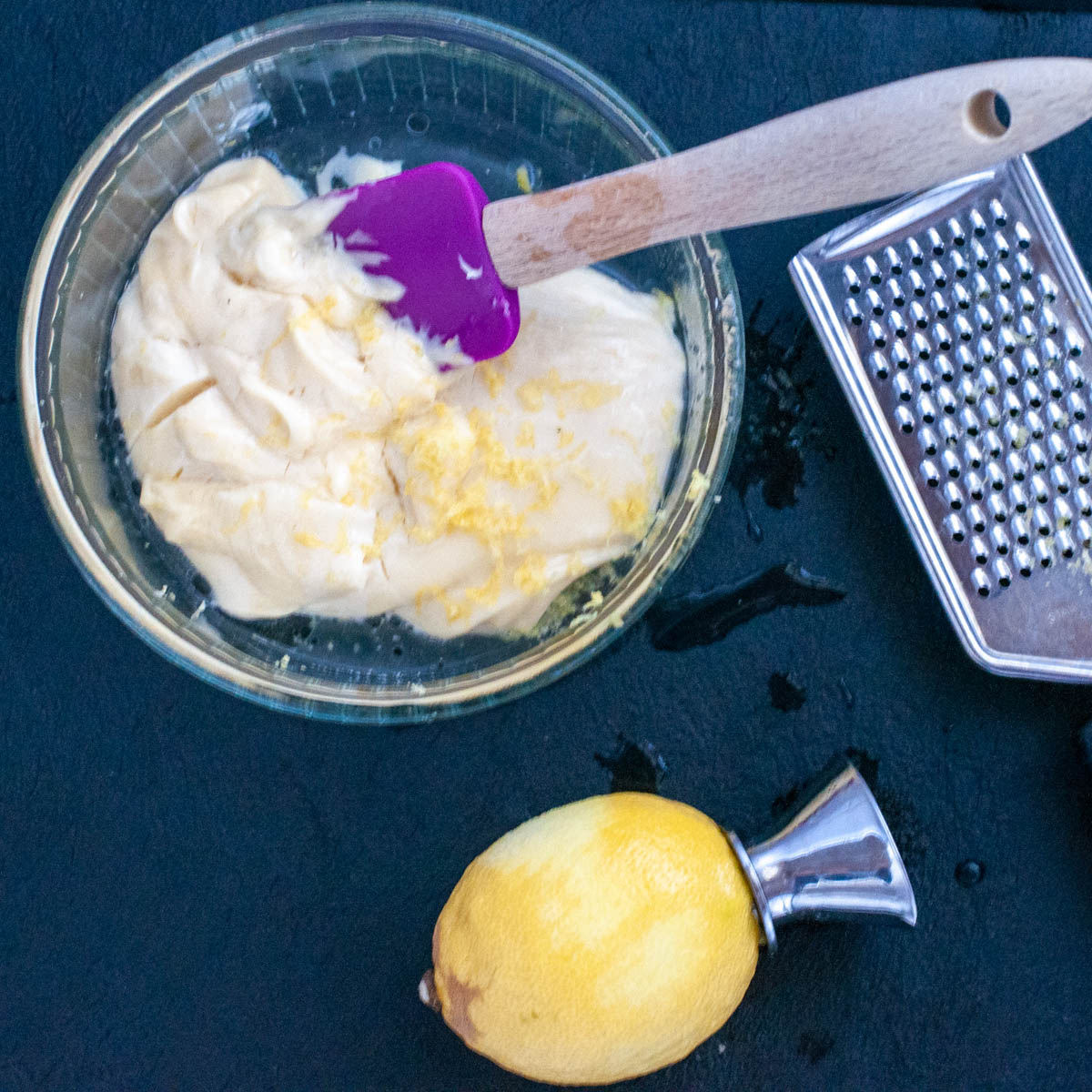
Fresh herbs:
Herbs are the most important fresh Italian ingredients. You can buy them dried, but fresh is way better. The most used are:
- Basil: one of the main herbs used in Italian cooking. Used as often as possible with any meal made with cheese, vegetables, and meat. Use as much as you can. Most of the time is sold as a plant, as Italians like to use fresh basil. The most common pasta seasoning is the pesto alla Genovese
- Parsley: Parsley is also used very often, more specifically with seafood. It is more traditional to use parsley instead of basil in seafood recipes.
- Origanum: it can be used fresh or dried, it preserves well-dried and it is an easy herb to have all year round. Mostly used for tomato sauce, salad, potatoes, and roasted meat. It is very versatile.
- Mint: It can be used for dessert as well as savory plates. Often used mixed with roasted summer vegetables like eggplants and zucchini.
- Bay leaves: Used in any stew or minestrone to add flavor. Removed when serving the dish.
- Garlic: very common in many Italian recipes but not always in large quantities. It is often stir-fried with olive oil at the beginning of the recipe and then removed. A famous garlic sauce is the bagna cauda used to dip fresh vegetables.
- Sage: often used with meat, especially pork, and chicken. Great with potatoes, in particular gnocchi.
- Rosemary: used mostly for roast, meat or vegetable roasts like potatoes or squash.
- Fennel seeds: used in many Italian sausages, pork recipes, and pulse
- Lemon and lemon zest: lemon juice and zest are commonly used in Italian cuisine to season pastries and cakes. An essential ingredient in the Italian kitchen.
- Onion: stir-fried with butter or olive oil at the beginning of many recipes. Before you make risotto, for example, the rice is first stir-fried with butter and onion.
- Soffritto: a mix of onion, carrot, and celery stir-fried and used as a base for many sauces, stews, and condiments.
- Bouquet garni: is a French word now commonly used in Italian. It is a bunch of herbs tied together to flavor stews or broth or any dish that requires cooking for a long time. I usually use bay leaves and rosemary wrapped inside a leek leaf. It is removed before serving
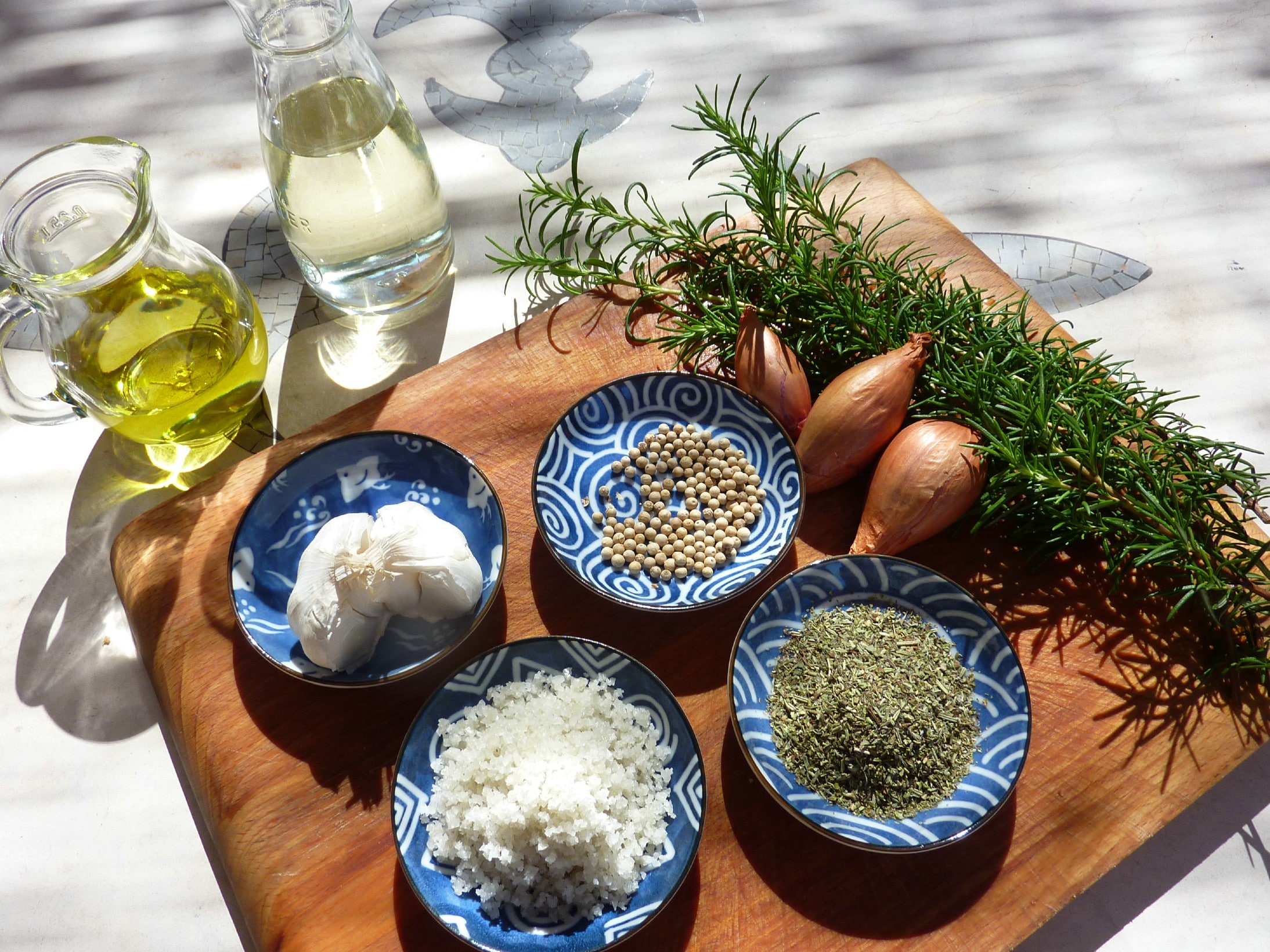
Cheese
Cheese is an important ingredient in Italian cuisine; these are the most commonly used however, there are many others. One important rule in Italian cuisine is that cheese is never served with seafood, but there are some rare exceptions.
- Parmigiano Reggiano: Parmesan cheese is originally from Parma, it is the most used cheese in Italian cuisine. A hard cheese made with cow's milk and grated on most dishes, especially pasta ( not seafood). A less expensive alternative is Grana Padano. The difference in the taste is very subtle if the cheese is used for seasoning. It is more generally called Parmesan in English.
- Pecorino cheese: Pecorino is the alternative to Parmesan but made with sheep's milk and locally produced mostly everywhere in Italy. It is spicier than Parmesan. It can be found fresh as well as matured at different ages. The more it is matured, the harder and spicier it gets.
- Ricotta cheese: Ricotta is made by re-cooking (ri-cotta in Italian); the serum, called whey, is leftover after the milk has been curdled to make cheese. Therefore it is a cheese with low-fat content. Usually made from cow's milk, it can also be made from sheep or goat's milk. It is used to make savory dishes like quiche or pasta but also for desserts like pastiera or for cakes to replace butter. There is also a dried and salted ricotta that is used to flavor many dishes, of which the most famous Pasta alla Norma with eggplants
- Mozzarella cheese is a spun paste ( pasta filata) cheese made using a pulled-curd technique. Different types can be eaten fresh or more solid for cooking, like pizza or lasagna. You can read more about the cheese in the recipes: Pasta Caprese
- Stracchino cheese: Stracchino is a cow milk cheese originating from the Lombardia region. It is also called Crescenza, which is the same cheese but seasoned only for 20 to 60 days. It is a fresh and creamy cheese with a sweet and fresh taste, like a creamy mozzarella. I use it on pizza with pesto, and it is delicious also in sandwiches with prosciutto
- Scamorza: scamorza is small and round and can be natural or smoked. It has the same shape as mozzarella and looks like a cured aged mozzarella. It is stretchy and chewy and can be used as a filling for rice arancini, pizza, or meatloaf. Especially the smoked one has a prominent flavor, and it is best to use it in a rustic, decadent dish. It is great grilled
- Provola: Provola is very similar to scamorza but usually has a longer shape. It is stringy but less chewy and has a subtler taste versus the scamorza. It can be used for more sophisticated dishes and combined with more delicate flavors. They are produced in different Italian regions and their taste might vary. It is great grilled
- Gorgonzola: it is a blue Italian cheese made from cow's milk. it is usually creamy and sweet with a bite from the mold. It is used in many dishes in, particularly as a sauce for pasta or gnocchi.

Salumi e Insaccati
Ham and salami are a staple of Italian cuisine. While salumi is commonly used to describe cured pork meat, it can also refer to other types of meat like beef, wild boar, roe deer, deer and goose.
Here are the most common:
- Use of whole parts:
- Made with raw meat: prosciutto, bresaola, culatello, bacon, lard and speck
- Cooked products include cooked (or smoked) ham, shoulder and roast loin (or loin)
- Insaccati: mixtures of minced meat stuffed into natural or synthetic casings:
- Cooked are frankfurters, cooked salami, Nduja and mortadella
- Raw sausages include salami, sausage, cotechino and zampone
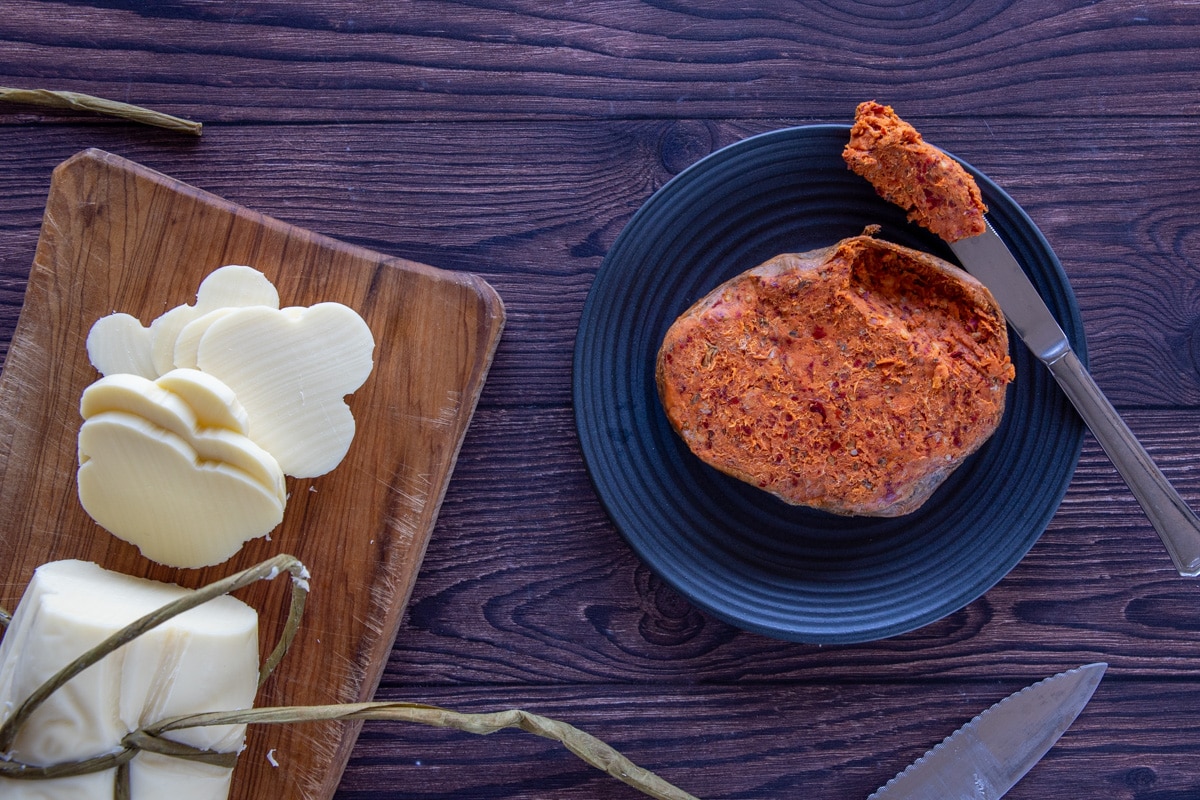
Ingredients for Desserts
- Chocolate: black, milk, or white there is always a supply of chocolate for cakes or desserts. Not to miss the Caprese cake, an Italian classic made with no flour.
- Cocoa: is used in recipes and for decoration sprinkled on top like in the tiramisu.
- Yeast: it is used to make fresh bread rolls or pizza dough. However, to make the crusty sourdough bread you find at the Italian bakery you need the mother yeast called in Italian "Lievito Madre". Not many Italians will have a Lievito Madre as it requires daily maintenance and cure, very time-consuming.
- Baking powder: "lievito in polvere" is used for cake, and it is usually sold in small 1 dose packages flavored with vanilla
- Sugar: Castor sugar is the most common sugar used for baking and making desserts. The icing sugar is mostly used for decoration or to make meringues. We also use brown sugar, but it is rarer.
- Honey: it is a very common ingredient in Italian desserts, often used as caramel to coat struffoli or make Torrone
- Essences: Vanilla, Orange blossom water, and Cinnamon are all flavors that are very common in Italian desserts. A proper Italian kitchen will always have a stock of them
- Sprinkle of pralines: colored sugar sprinkles to add color and make any dessert more festive

Drinks
- Coffee: most Italians are coffee lovers and always have a box of their favorite espresso beans. My favorite is definitely Illy.
- Wine: forget about coke or soft drinks; Italians will have wine on their table to drink with their meals, but also use wine to blend ingredients while cooking.
- Cooking liquors: the most common liquors used in Italian cooking are Marsala (a sweet wine) or cognac. Often used to blend with meat or in desserts
- Liqueur or digestive: all Italians will have some digestive to serve to their guests at the end of the meal. Some are bought in stores, some are made at home. If you want to see my selection of homemade liqueurs you can check their recipes in the category: Homemade liqueurs

Main Ingredients
To complete the shopping list, don't forget to add the following ingredients. You can print the list below or follow the links to do your online shopping:
- Milk
- Eggs
- Cereals
- Meat
- Seafood
- Fruits
- Vegetables
- Homemade chicken, brown and fish stock
- Juice or soft drinks
To help you further, in the following articles, you will find ideas on cuts of meat, seafood, a wide variety of vegetables and fruits, and recipes ideas:
- Beef Cuts Diagram for French and Italian Recipes
- Pork Cuts Names And How to Cook Them
- Lamb Cuts (in French and Italian)
- Swordfish Meat: Buying Fresh, Cooking Choices
- What Are Calamari Squid Cuttlefish and Octopus
- Variety of Local Unusual Fruits and Vegetables to Create a Festive Spirit
Follow the series with the next article:
Find my recommendations of authentic Italian cooking books translated into English in my Amazon shop section: Cooking Books
I am a participant in Amazon Services LLC Associates Program. Affiliate advertising programs are designed to provide a means for Bloggers such as “Your Guardian chef” to earn fees by linking to Amazon.com and other affiliated sites. All links are selected by me, I would not recommend a product I don't use my self on a regular basis. You can read hee my disclaimer
More authentic Italian resources
For more information you can read: , 36 Essential Herbs And Spices Used In Italian Cooking, 32 most popular Italian street food, 22 Italian breakfast recipes, Italian Sunday dinner a 6 meal courses, Italian table setting and etiquette
Hope you find this article helpful, please if you have any questions, write them in the comments below and I will be happy to respond and help. You can find delicious ideas if you FOLLOW ME on Facebook, YouTube, or sign up to my newsletter.
📋 Clipboard (ingredients)
Ingredients
Basic seasoning:
For cooking:
Carbohydrates:
Preserves for condiment
Food Preserves
Nuts and dried fruits:
- Nuts: Almonds, pistachios, walnuts, pinenuts
- Dried fruits
- Dried vegetables
- Candied fruits
Herbs:
Cheese:
Ingredients for Desserts
Drinks:
- Coffee
- Wine
- Cooking liquors
- Liqueur or digestive
Other main ingredients
- Breakfast cerials
- Milk
- fresh eggs
- Meat
- Seafood
- Charcuterie
- Fruits
- Vegetables
- Juices and soft drinks

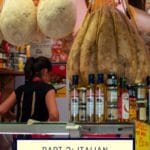


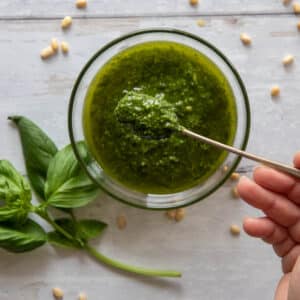


Yvonne Holmes
Wonderful explanation of authentic ingredients and what they are.
Thank you for your time putting this all together for us "wanna be Italians!!!!"
I have always enjoyed the foods and now find myself preparing more and more of the dishes. Especially love the rich desserts!
Yvonne
Laura
Yvonne, thank you for your comment. I am glad you appreciate this article. It is not the usual 10 ingredients and I thought some people may find it too long and tedious.